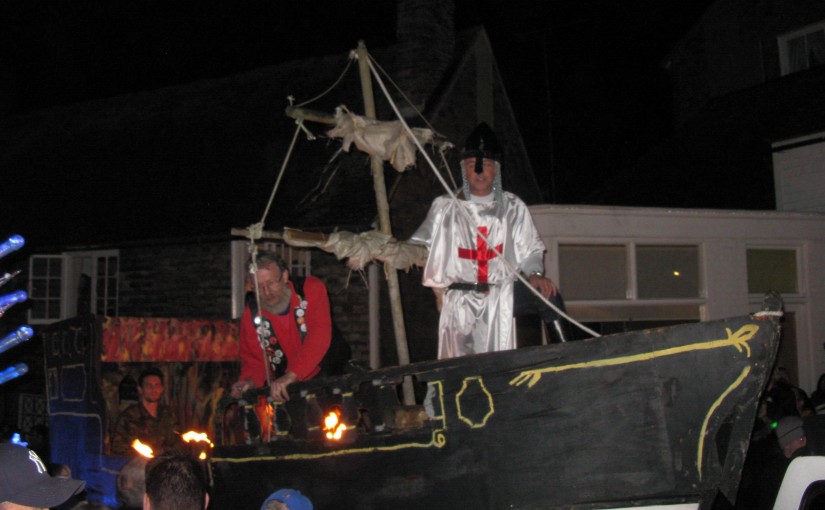They came in their thousands, packing the narrow streets of Rye to watch the spectacular torchlight procession that has been an annual event put on by Rye Bonfire Society since time immemorial.
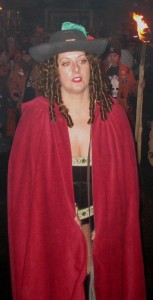
Customs, handed down over the years, reflect the mind set of Ryers down the ages. The same determination not to be subjected to unreasonable laws and doctrines imposed from above, of never forgetting bad things that have been done to the town and its inhabitants and a less than subtle way of letting those that transgress against this town know they are out out of favour.
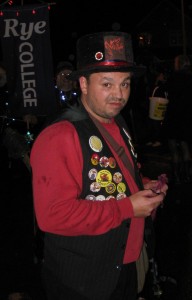
It all started long before Guy Fawkes. ‘Rye Burns it’s Boats’ harks back over 600 years to 1377 when a French band of raiders struck Rye in the middle of the night, burning and pillaging. The town was destroyed, save for the Church and a few other stone buildings. The Church Bells were removed and taken as a prize across the Channel back to St. Peter’s Port.
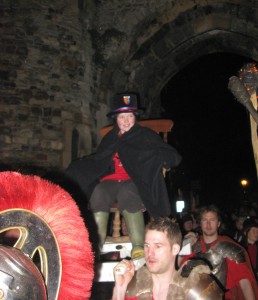
A year later the men of Rye, aided by men from Winchelsea, returned the compliment, destroying St. Peter’s Port and bringing the Bells back to their rightful home along with the half dozen or so French boats that had not been burned at their moorings. These boats were pulled out of the water and dragged in flamed around the streets. The tradition is continued to this day but compared to earlier celebrations the modern version is rather a tame affair. Forty years ago the ‘burning boat’ was just that. An old iron hulled vessel was filled with combustibles, fuelled with diesel and continuously stoked as it was dragged around Rye on the back of a tractor. The flames were so hot they often melted the telephone wires stretched across the High Street and by the time it reached The Mint the hull would be glowing red. On one occasion when there was a problem and the procession was stopped for a few minutes the heat was so intense it blistered the paint on the doors of The Standard Inn.

Health and Safety put a stop to all that and now the flame is about the same size as that of a Winchelsea which we all used as school children.
There have been many attempts to stop the Bonfire Celebrations on ‘safety issues’ over the years. The most recent being since the millennium when the Rye Police Chief almost succeeded. Only a last minute intervention by Michael Foster the Rye Member of Parliament reversed the decision. An effigy of that police chief was carried round the town on a special vehicle in the procession and blown to smithereens just before the Bonfire was ignited.

Long before the turn of the 19th. & 20th. Centuries, Bonfire Boys were involved with other groups in the town who supported local farmers. The farmers were unhappy about the new lock being built to dam off the Rother, and, in 1830 gave a desperate show of their disenchantment with the system doing £3,000 worth of damage (a huge sum in that time) to Scots Float Sluice.
The Riot Act was read and bullets were fired over the heads of the rioters before they dispersed. This was the last recorded time the Riot Act was read and guns actually fired in England.
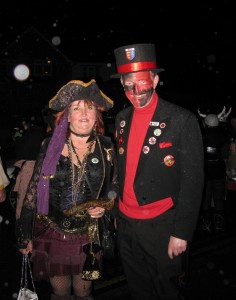
Whatever the justification it proves that Ryer’s are very determined lot when they are roused. This event is remembered in the Rye Bonfire Society ditty. Rye – The Fifth, which includes the line:
“……. So Oller boys oller, make the bells ring
Blow up the Sluice and God Save the King!”
“Rye’s Own” December 2010
All articles, photographs and drawings on this web site are World Copyright Protected. No reproduction for publication without prior arrangement.
